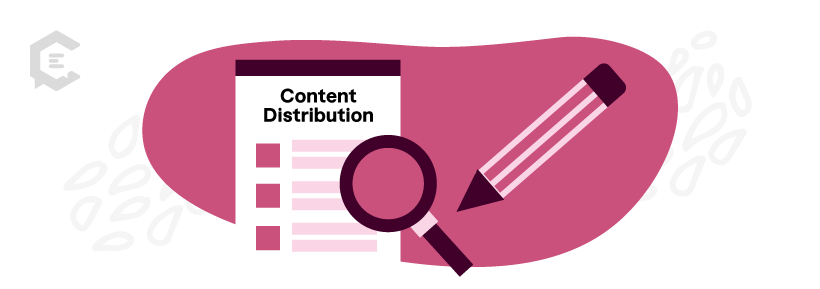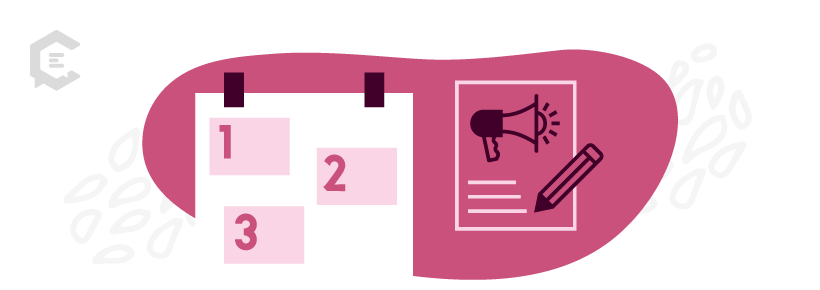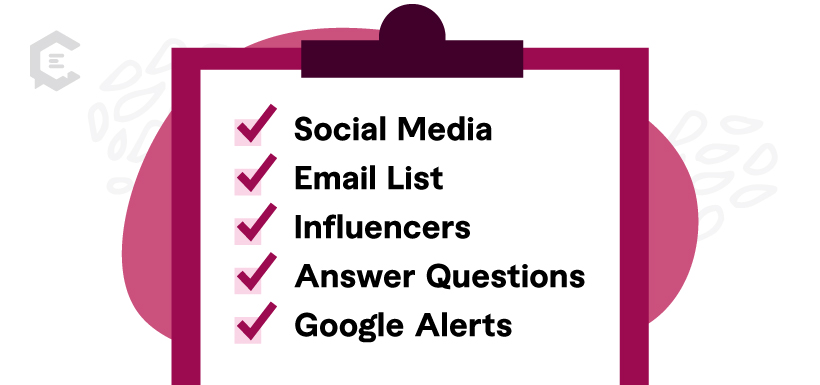You’ve created high-quality, relevant pieces of content that will engage your audience. Now you just need your audience to find it.
That means you need a content distribution plan.
In this article, we’ll explain how to create a strong content distribution plan and the key areas that should be on your content distribution checklist to expand your reach and drive engagement.
What is Content Distribution?
Content distribution is a strategic approach to sharing and promoting your content across multiple channels and formats. Its main goal is to ensure it reaches and engages your target audience effectively.
Content creation for your business can take a variety of forms from engaging images and blog posts to dynamic videos (among others). The core of a good content distribution strategy lies in strategically planning where you’re publishing and promoting your content to maximize your visibility.
Why should you have a content distribution plan?
Creating a content distribution plan is important for a number of reasons.
- It can boost your impact through content curation and creation.
- It ensures efficient collaboration between your team and other departments.
- It helps you measure your content’s performance against the marketing goals you’ve set.
How do you create a content distribution plan?
To create a content distribution plan, use the following strategies:
- Consider the marketing personas you’re looking to engage with.
- Figure out what the goals of the post or promotion are.
- Settle a topic for the content and its purpose.
- Decide what types of content you’re going to create.
- Develop the tone that the content will have.
- Choose who is in charge of developing content and posting.
- Decide a Call to Action (CTA) strategy for the content. Where should the traffic drive to?
- Set the Key Performance Indicators (KPIs) metrics to gauge if the content has succeeded.
- Create and produce the content, then post it to the appropriate distribution channels.
Your Content Distribution Checklist
Distribution Channels
Owned Channels
- Website
- Social Media
- Podcasts
- YouTube
Earned Channels
- Guest Blogging
- Influencer Partnerships
- Media Coverage
Paid Channels
- Paid Social Advertising
- Google Ads
- Display Advertising
- Sponsored Content
5 Key Areas on Your Checklist
Here are five main sections you should have on your content distribution plan. Follow the checklist below to set yourself up for success.
1. Post to social media accounts
Pushing your content to your social accounts is an easy way to let your followers know about it and get exposure immediately.
Keep in mind, though, that some posts aren’t suitable for all social media accounts. Before posting updates, consider how your followers may differ across social media accounts.
Tasks include:
- Posting new content.
- Checking business mentions.
- Responding to comments or messages.
- Reaching out and engaging with followers.
2. Distribute through an email list
Utilizing your email list is another effective way to amplify your reach. It can give newly published pieces an immediate boost and increase the likelihood of your audience sharing them across social media platforms.
It also creates an exclusive experience, making people feel like they’re “in the know” with your brand, which can foster a deeper connection.
Key tasks:
- Growing your email list: Begin by expanding your email contacts through incentives within your website subscription funnel, like paid promotions. For example, offer a 15% discount on the first purchase to new subscribers who sign up for your email list.
- Segmenting and organizing your distribution list: Categorize your list into targeted segments, using qualifiers like demographics or specific promotions they’ve shown interest in. It’ll lead to more personalized and relevant email marketing campaigns.
- Crafting engaging emails: Always ensure your emails are designed to capture your audience’s attention, deliver value, and encourage engagement.
3. Reach out to influencers
Research influencers in your industry to see if any match with the content you’re distributing. If and when you mention one of them in your content, reach out to them and let them know, and feel free to tag them. You never know when they’ll turn around and share it!
They don’t need to be a massive celebrity. It can just be a matter of mentioning someone influential. The more you’re making them look good with your content, the more likely they’ll notice you.
Many influences share a variety of content from creators in similar niches. It’s absolutely possible to convince them to share the content you created! Just make sure the content is amazing, then email, tag, or DM them.
Tasks include:
- Researching influencers in your industry.
- Creating a list of potential influencers to engage with.
- Pinpointing your target influencers’ motivators.
- Budgeting and determining what would be fair compensation for them.
- Reaching out to your prospective influencers.
4. Use your content to answer questions on Quora and Reddit
Forums and social networks like Quora and Reddit come in handy for distributing your content. You can also get some traffic by answering the questions people are already asking. For example, if you’ve written a blog post on email marketing strategies and come across a question on initiating email marketing efforts, seize the opportunity by giving them a helpful response. Then subtly include a link back to your email marketing blog post that offers more in-depth value.
A lot of internet users flock to Quora and Reddit to find answers. Search for topics you’re covering in your content and establish a consistent posting schedule on these platforms. Just be careful not to over-share. You don’t want it to look spammy and get you banned from some of those online communities. Plus, it can damage your brand reputation.
Tasks include:
- Searching topics relating to your products or services
- Replying to questions with relevant information and links
- Keeping an eye out for follow-up questions and maintaining open communication
5. Use Google Alerts
Creating and promoting content takes a lot of effort. If you want it to have long-term value, you may want to go the extra mile.
One way to do this is to stay on top of new posts and discussions about the topic you just covered. Creating Google Alerts for your article’s key points is a great way to automate the whole process.
To do this, go to google.com/alerts and put your topic in the search bar. Then hit “create an alert.”
Google will email you whenever a new article is published about this topic. Discussions about it can easily be found this way – especially in article comment sections where you can link to your content.
Using this approach will save you time and energy promoting old posts manually.
Tasks include:
- Keeping an eye out for new Google alerts.
- Using those alerts to push traffic to your content.
Need Help With Your Content Distribution?
When you partner with ClearVoice, we can help you develop and execute a high-level content distribution plan that increases your reach and drives engagement.
Talk to a strategist to see how our managed content creation team and content experts can help you scale your content distribution efforts to maximize their impact.







